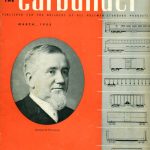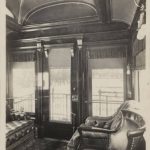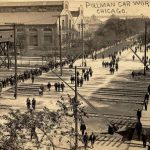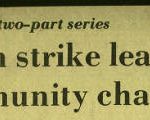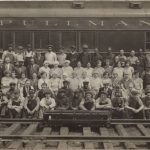2019 marks the 125th anniversary of the Pullman Strike and Boycott, a momentous event in the history of organized labor in Illinois and the U.S., taking place throughout the late Spring and Summer of 1894. In commemoration of the Pullman Strike, the IDHH examines its place in the history of labor and workers’ rights movements in Illinois and U.S. Collections provided by the Pullman State Historical Site provide particular insight into the event and its cultural and historical milieu. The scholarship of and input from Pullman State Historical Site Services Specialist, Martin Tuohy, was indispensable in developing this post.
The Pullman Strike and Boycott began as a walkout of the Pullman Palace Car Company by shop workers in May 1894. By July, it included 150,000 railroad workers over 20 railroads across 27 states. Pullman workers and allies across the country protested both the particulars of the Pullman workers’ grievances, such as layoffs and deep wage cuts while the Pullman company town maintained its rent rates, as well as the power of capital over workers that the grievances represented. The strike and boycott was part of wider developments in Workers’ Rights organization and came in the wake of several other significant demonstrations in the late 19th century along with the often oppressive responses to grassroots organization by companies and industry leaders. Company founder, George Pullman, played a significant role in exacerbating tensions between workers for obstinately emphasizing the company’s right to rent profits over most workers’ grievances.
Beyond Pullman and throughout the late 19th Century U.S., increased mechanization during the Second Industrial Revolution played a role in depressing wages and an ever increasing division of labor often alienated workers from their work and the products they produced. Moreover, while westward expansion in the late 1860s and early 1870s brought with it an increase in industry and investments, especially those related to railroads, the 1870s and 1880s were marked by significant economic declines. When times were difficult, workers were often hardest hit, facing frequent layoffs and wage cuts between the early 1870s and mid 1890s. In response, workers increasingly organized and acted by facilitating collective bargaining, and striking and boycotting when necessary. Strikes by miners and other factory workers throughout the 1880s and 90s, including the Haymarket Affair, set important precedents for the Pullman Strike. Oppressive responses by capital against unions, activists, and union leaders often left workers feeling, at best, under-represented and, at worst, at the whims of their employer.
The Pullman Strike and Boycott had some key differences from earlier actions, however; instead of organizing via craft unions, the Pullman Workers had the support of the fledgling but formidable American Railway Union (ARU), which included members across a range of professions and company leadership roles. Workers from the Midwest to Washington State struck and boycotted trains with cars built by the Pullman Company. It became the largest and one of the longest work stoppages up to that time in U.S. history and effectively shut down railway travel from the Midwest to the Pacific Northwest. The strike was ultimately broken by a combination of the limited resources of workers after going months without pay, injunctions by federal courts, military force, and the imprisonment of union leaders and activists, including ARU president, Eugene V. Debs. Its leaders indicted or imprisoned and hundreds of its members blacklisted from future employment, the ARU collapsed.
The Pullman Strike precipitated the role of the state as an arbitrator between workers and railroad companies with the passing of the Erdman Act in 1898. This was the first in a series of Congressional acts aimed at regulating and reforming railway labor which laid the foundation for national labor laws enacted in the 1930s. The strike and its aftermath also raised important questions about the proper role of law enforcement, the military, and the state in cases of mass demonstrations within and beyond the realm of workers’ rights and industrial interests. At the local level, the Illinois Supreme Court forced the Pullman Company was forced to sell its residential property and many workers were able to purchase their long-rented abodes. The original town of Pullman is now a National Monument and Illinois State Historic District.
For further reading, refer to Martin Tuohy’s articles on the “Pullman Strike and Boycott” and “George Pullman” in Encyclopedia of U.S. Labor and Working-Class History (2007). All of the IDHH items related to the Pullman Strike can be found here. Explore material related to George Pullman, including correspondence and portraits.
